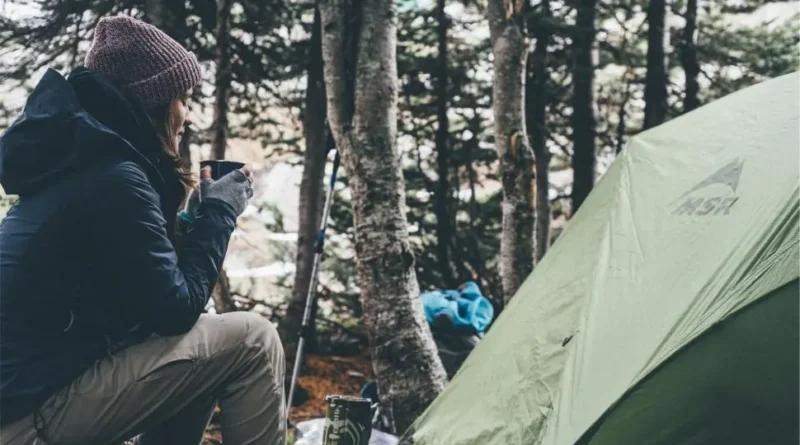Staying Warm During Outdoor Activities
Staying warm during outdoor activities is essential for comfort, safety, and enjoyment, especially in colder weather. Whether you’re hiking, camping, or simply spending time outside in winter, being properly dressed and prepared can make all the difference. Here’s a guide to staying warm and cosy, even in challenging weather conditions.
Layer Up Wisely
Layering an effective ways to stay warm outdoors. The three-layer system typically includes a moisture-wicking base layer, an insulating mid-layer, and a weatherproof outer layer. This combination traps warmth, wicks away moisture, and provides protection from wind and rain. Each layer should have a specific purpose, and together, they create a warm and breathable outfit suitable for various activities.
- Base Layer: Choose a moisture-wicking base layer. This layer sits directly against your skin and helps draw sweat away from your body, preventing dampness and chills.
- Mid-Layer: The mid-layer provides insulation by trapping body heat. Fleece jackets, down vests, or synthetic insulated jackets work well as mid-layers. Look for outdoor brands and hoodies for hunting as they’ll have the qualities you need for spending time outside. Down is excellent for dry, cold conditions, while synthetic insulation performs better in wet environments.
- Outer Layer: A waterproof and windproof outer layer shields you from the elements. Look for jackets made with materials like Gore-Tex or similar technologies, which block out rain and wind while remaining breathable. This layer ensures that moisture from rain or snow doesn’t penetrate your clothing, keeping you dry and comfortable.
Choose the Right Fabrics
Selecting the right fabrics for each layer is crucial for staying warm. Avoid cotton, as it absorbs moisture and will take a long time to dry, which can lead to chills. Instead, choose wool, polyester, or nylon for your base and mid-layers. Merino wool is a favourite among outdoor enthusiasts for its warmth, moisture-wicking properties, and natural odour resistance. Synthetic materials like polyester also wick moisture effectively and dry quickly, making them ideal for active pursuits.
For the outer layer, look for waterproof and windproof materials, such as Gore-Tex or similar fabrics, which offer protection from the elements without trapping sweat inside.
Protect Your Extremities
The body loses heat quickly from areas like the head, hands, and feet, so it’s essential to keep these parts warm. A good hat is crucial, as up to 10% of body heat can be lost through the head. Look for hats made from insulating materials like wool or fleece. For your hands, choose insulated, waterproof gloves or mittens. Mittens are often warmer than gloves because they allow fingers to share warmth, making them a good option for extremely cold conditions.
Cold feet can quickly make any outdoor experience uncomfortable, so invest in warm, moisture-wicking socks, ideally made from wool. Avoid cotton socks, which retain moisture and can lead to cold, damp feet. For activities in snowy or wet conditions, consider insulated, waterproof boots to keep your feet warm and dry.
Keep Moving
Physical activity generates body heat, so staying active is one of the simplest ways to keep warm. If you start to feel cold, take a brisk walk, do some jumping jacks, or move around to boost circulation and generate warmth. However, be mindful of sweating, as excessive perspiration can make you cold once you slow down. Adjust your pace or remove layers as needed to regulate your body temperature.
Bring Extras and Stay Dry
Always pack extra layers and socks in case your clothing gets wet or you need additional warmth. Wet clothing loses its insulating properties and can quickly make you feel cold. If you’re hiking or camping, consider packing a small, lightweight emergency blanket or heat-reflective gear, which can provide extra warmth in a pinch.
Use Heat Packs
Portable heat packs are a great addition to any cold-weather gear kit. These small, inexpensive items can provide hours of warmth and are especially useful for keeping hands and feet warm. Place them inside your gloves or boots, or keep them in your pockets to warm your hands periodically.
Conclusion
Staying warm during outdoor activities requires thoughtful preparation, from layering properly to choosing the right fabrics and keeping your extremities protected. By following these tips, you’ll be better equipped to handle cold conditions, allowing you to enjoy the beauty of the outdoors without discomfort. With the right approach, you can stay cosy and make the most of your outdoor adventures, no matter how chilly it gets.




